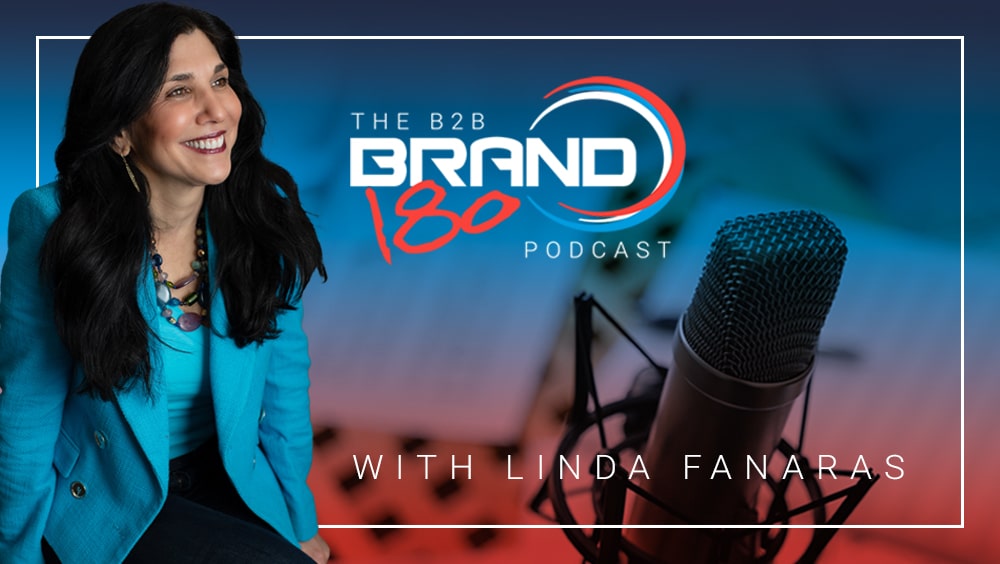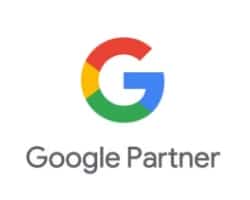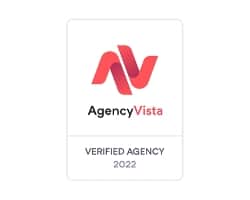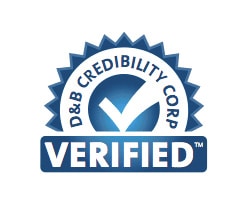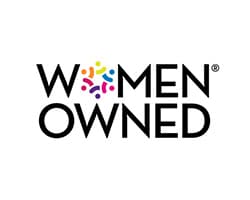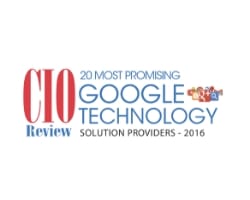In this episode of B2B Brand180, Linda interviews Doug Brown, CEO of CEO Sales Strategies, discussing topics ranging from the importance of follow-up in sales, to aligning sales and marketing strategies, to understanding buyer psychology.
Doug shares valuable insights from his extensive B2B experience, emphasizing the significance of personalized communication and continuous engagement to maximize sales opportunities. Thanks for listening to this week’s episode and don’t forget to like, share and follow.
Doug’s Info:
LinkedIn: https://www.linkedin.com/in/dougbrown123/
Website: https://ceosalesstrategies.com/
Win Win Selling: https://www.amazon.com/Win-Win-Selling-Unlocking-Profitability-Objections/dp/0578545233
Linda’s LinkedIn: https://www.linkedin.com/in/lindafanaras/
Linda’s book, Claim Your White Space:
https://www.amazon.com/CLAIM-YOUR-WHITE-SPACE-CRITICAL-ebook/dp/B0CLK8VLYV
Millennium Agency: Brand Strategy | Marketing | Web Design: https://mill.agency
YouTube Channel: https://www.youtube.com/@mill.agency/
Linda Fanaras:
Hi, I’m Linda Fanaras, host of B2B Brand 180 podcast and CEO of Millennium Agency, where we talk all about branding and growth strategies for your business. But before I start today, I just wanted to thank our listeners for listening in. And if you like what you hear, please feel free to like share or subscribe to just help our channel grow. So today I’m excited to bring in Doug Brown. He is from CEO sales strategies. It’s specifically designed for individuals who sell. From a business to a business. So it’s B2B focused and it’s really around different ways to help our audience grow their company. So a little bit of background about Doug he’s led a lot of client award winning and high performance teams and profitable development programs for companies. He’s worked with Intuit, CBS. Procter and Gamble and many others to name a few. And today Doug owns an advisory and training company and he helps businesses and individuals actually increase their sales revenue and profitability to line up with those top 1 percent of performing salespeople. So welcome Doug to the B2B Brand 180 podcast and thank you for joining me today.
Doug Brown:
Linda, thanks for having me here and thanks for making me sound somewhat important. I appreciate it.
Linda Fanaras:
You absolutely do. So I would love for you to take a couple of minutes and share a little bit of information about yourself that maybe I haven’t covered yet.
Doug Brown:
Well, I started working at the age of three for my dad’s business. That’s great. Yeah. Yeah. I swept floors for 25 cents a week. It was one of the greatest jobs. I had a lots of candy at the end of the end of the week is back then you could buy candy for, you know, a penny for a handful and and I’ve built about 35 companies over my life since that period of time with partnerships or, or. Owning them outright myself. Some were very, very successful. Some were not, and you know, some broke even and that’s called entrepreneurship. And I think many listeners might be able to relate to that. And you know, I spent 12 years in the military. I built businesses on the side through the military. And you know, eventually decided geez, I needed an education. So I went and got a couple of college degrees. And kind of follow that path. But, you know, I’ve learned a lot of things through the years. Some to do and some not to do. I think, you know, probably my, my crowning achievements in life are my, are my children above and beyond anything else to me. So, you know, I have a pretty good value set on family. And many businesses, I’ve built them around the family. So, I always figure you build your life first now and then you build your business around that.
Linda Fanaras:
Right. No, that’s a great point and that’s an important part. So that’s awesome to hear. So I’d love to ask you this question because this has always been a challenge since a day I started my first marketing job is that sales and marketing people don’t often align when it comes to. What they do, you know, you’ve got marketing that are driving the leads and sales saying all the leads are no good. So I am wondering, what do you have for strategies and ideas to help our audience actually get those two areas of business aligned a little bit better than they typically
Doug Brown:
are? Yeah. Yeah. That’s deal with the water and vinegar type of solution, right? A lot of times in companies and it’s, and it’s unfortunate because the company actually suffers when that happens. And so. I think the, the thing that I’ve used to get people on board is to understand and agree on what is actually a qualified lead in selling and what is qualified lead in marketing and for people to understand, because when I talk to salespeople, they don’t, they don’t understand what marketers do a lot of times. So they think, you know, marketers are in this room and they’re just doing their job and they just throw these leads out there and they don’t put the effort in that salespeople think they’re supposed to put in. And then you talk to marketers and they’re like, well, you know, these leads are qualified and salespeople are like, no, they’re not, you know, and so you have that game going back and forth. And what I do is I take a bell curve and I draw it out for them and I say, okay, look in the middle of all bell curves, you’ve got about 68 percent of. Your audience that’s going to be in the middle of a bell curve. Those are going to be your potentials. Now, half the bell curve leans toward the pretender side and half the bell curve leads, leans toward the sales ready side. All right. So let’s define what the potentials are, but let’s not even focus there. Let’s look at the left side of the bell curve on the left side of the bell curve, you’re going to have more pretenders and you’re going to have people who are indifferent. Mm hmm. When salespeople get leads like that, they’re going to be angry. Because because to them, it’s a waste of their time, but marketing might have that as a marketing qualified lead. Now, if we look at the right side of the bell curve, we’re going to have people who are more committed. You know, I call them Kaizen players cause they’re kind of into the game. And then to the real extreme, right. You got the the sales, the purchase order ready lead, right. Which is what every salesperson in the world wants. So what we do is we’ve mapped that out and we define what is supposed to be from that potential line up. That is really more of a sales qualified lead. And what is, you know, marketing qualified leads mean, and when should sales take that lead? Once I can get those two to agree to that point, then usually the friction seems to melt away. So it’s a communications issue more so than anything else and an ego driven things that get in. And that, that’s usually the challenge. And that’s how I’ve been able to resolve it in many, many companies.
Linda Fanaras:
So you define and categorize the level or the quality of that lead within the company. And then from there, you’re able to determine, back in the old days, they used to call them like cold leads, warm leads, hot leads. Now there are a multitude of different levels around that as well.
Doug Brown:
Yeah. The thing is this, we can define it, but we have to get agreement on it. And just like any agreement, you get a sign off on it. So you put together a sheet and you say, this is what we agreed to. And, you know, the head of sales is signing at the head of marketing, signing it, the owner of the company or the CEO, we all sign it. We all go, here’s how we’re playing. And that usually defines how we play. So therefore the rules aren’t blurred anymore. The challenge is and salespeople don’t send hate mail in to me, please. But the challenge is you don’t understand what marketing does. Right. And the challenge from marketing is they think that they understand what sales does, because, you know, sometimes marketers were salespeople. And so the challenge is really that it’s a communications issue within a company, and it’s not set or defined by leadership and agreed upon by the parties who are leading. And that’s where I find the friction coming from.
Linda Fanaras:
Yeah, and that makes complete sense because that foundation, which is defining the quality of that lead and having a definition for each one of those categories can clear up a lot, right? If you make a, you’re talking to somebody and they’re just not interested or they’re, they might look at it next year. That can be in a specific category to your point. If somebody is ready to sign a purchase order that goes into another category. So if you can break that down and build out your whatever, you know, I’m not exactly sure what you call them, but if they’re just cat, I’ll call them categories for this point and figure out what goes into each one. I think it will definitely help the sales process and the marketers understand like what’s working and what’s not working,
Doug Brown:
frankly. Right, because Linda, most people don’t understand even conversion rate versus close rate, right? Right. They blend them together. And, you know, one being the conversion rate from the time, say, let’s just, Keep it defined easy for people. From the time the lead hits to the time at lead closes. Right. So we can measure that and determine whether marketing is, is as effective and not, and then from the time the salesperson actually talks to the person to the time that closes, well, that’s a close, right? Right. So when we look at that side, we can, we can then deem, okay, is this a sales challenge, a marketing challenge, both challenges, right? And what I have found, working with. Literally thousands of companies. It’s never one challenge. It’s, it’s always, it’s always a multitude of things and that’s why we get people to agree. On what the definitions and the rules are just like a sporting game. Otherwise, you know, you’re going to be shooting the puck in the wrong side of the net, you know, and, and going, Oh, I scored. No, you didn’t. You scored against us. Right.
Linda Fanaras:
That type. Exactly. So when you’re working with a sales people, for example what are, what are sort of the number one reason, what is like the number one reason why they aren’t closing? or why they’re having difficulty closing?
Doug Brown:
That’s a big question, but I would say that firstly, they don’t know what a real buyer is. Most of the time they haven’t defined it. And so they’re spending a lot of their time, you know, the old term happy years, right? Oh, I got something. It’s going to close, so they’re writing it down, but they’re not qualifying it to make sure it’s really a true buyer. That’s where a lot of salespeople spend a tremendous amount of time, just hoping and trying to get it over the line. And the biggest challenge that they have is they don’t generate enough self leads anyways. So they’re reaching most of the time because they don’t have, you know, let’s say that they know their ratio, they needed 40 leads a month to double. Well, they have 20 leads a month and they’re barely making quota. So what they’re doing is they’re, they’re not generating enough leads on their own, or they’re relying on marketing to actually do the lead generation. Right? So that’s where they get in trouble because the master prospector will always, always, always, always outsell the master closer. That makes sense. And the second thing they’re doing, which they’re making a mistake now, and quite frankly, it’s not as much of their fault, but they haven’t realized that sales has shifted. Right. So the internet flattened sales, right? I remember back in the late nineties, I was telling people this was going to happen and they told me you’re crazy. And I’m like, no, no, think about it. Then they got the information now that they used to rely on us. And they were like, no, no, never happened. Well, guess what? We’re here. And then the pandemic really flattened it. And now AI is doing the same thing. And so what’s happening is. The power has shifted. The information is shifted to the buyer’s side of the table, right? And so today, more than anything, we’ve got to be more personalized and more meaningful and more relevant in our conversations. And there’s so many people coming in. I’ll do a discovery session. You should have that discovery session done before you actually get in the building. Right. And that’s where they’re making. The challenge happened for themselves because they’re not able to competitively differentiate themselves from, from all the other people doing the same thing. So they should know a lot of information before they get to the actual meeting today, more so. You know, in years past, that’s where you discovered it,
Linda Fanaras:
And they have the ability to do that based on what’s available today. Anyway, I mean, it’s so easy, you know, and yeah, the, the one, the one point that you did mention earlier is the salesperson may not qualify during the process. So let’s say they have somebody that they’re saying, Hey, I got this, you know, company that’s interested. I’m going to close them next month. I know, but. In all sincerity, they haven’t really done the qualification process to ensure that they’re going to close. Should they be asking specific questions along that process? What should they be doing to make sure that they are leading that prospect down a path to close eventually versus just sit back and wait?
Doug Brown:
Yeah, there’s some major strokes of the brush that they could, they should always have a, what, what do they want? Right. Do they actually want something? Because a lot of people hear things when they’re selling and they go, Oh yeah, it’s, it’s like, I, I relate to sometimes to a man and a woman sitting, talking. And the woman’s beautiful and the guy’s very interested and she says something and he takes it as a cue, like, Oh, she’s interested. Well, maybe not. Right. So they’re not qualifying. That, people buy for generally two reasons, a, they want to resolve some challenge that’s going on now. So they know they have a problem or B they’re looking for a better future, some type of opportunity. Right. And we, as the seller, we must know what that is and most people that I’ve listened to their calls or sat in on their, you know, their meetings, they don’t qualify that. So A, what do they want? B, what do they want? What timeframe do they want it in? Okay. So that’s the other thing that, you know, it’s like they’re hearing it and they’re like, Oh yeah, yeah. They give me indication what they not qualifying what timeframe they want that. Particular thing. The third thing would be, are, are they committed when it comes down to it? So is this just a conversation that they’re, they’re trying to figure out what to do and how to do. And, you know, now we, as a sales channel go, Oh my gosh, I heard all these happy things. So I’m going to make my commit, you know, to this and I’m going to announce my numbers and it’s really two, three, four months out. Maybe, you know, number four, have they talked to all the stakeholders because this is a big one that people miss all the time. There are more and more people in the decision making process now than there were 10 years ago for the average sale. And so if we negate or don’t pay attention to the influencers or the multiple stakeholders that are in that. Position then, and we’ve never asked the question to qualify that. Right? Right. Then, then, then we miss out and the, the last one is, there’s two last ones. One, do they wanna commit within a timeframe that we can actually achieve? Mm-Hmm. And, and, and the, not a lot of times they can, and the last one is, do they have budget for it? I mean, Linda, I, I was shocked how many people do not ask about budget, right? They’re like, Oh, I got the sale going on sale going on. And then it’s like, okay, let’s try to close this thing. And it’s like, well, we don’t have funds. Right. Appropriated for this, you know, or geez, we can’t do this until our, our next year’s you know, allocation comes in or whatever. But in the meantime, they’ve gone to their boss’s boss and said, Hey, I commit this number this month. And that’s where the challenge runs into. So they, they really should have a checklist of what’s most important for them. And every single time they go through this. They just go through that basic checklist. And you know, you had mentioned 1 percent earners, they do this every single time. It is. You know, boring to agnostic
Linda Fanaras:
you’re right. If you think about it from a sales perspective, I’ve been on both sides of the coin, but if you don’t, if you start brainstorming with a perspective. customer and you start uncovering maybe some interest. So let’s say they’re interested in, you know, I don’t know, email marketing because you brought it up. It’s a thought. It doesn’t necessarily mean that they’re going to buy those services. It just means that you’ve uncovered something that you just piqued their interest. So if you don’t ask those additional questions that you just mentioned, you know, Who’s the decision maker? What’s the time frame? So on and so forth. That could just be sort of pie in the sky ideas that will never come to fruition. So I think those are really great points that you made is kind of coming up with those questions to ask regardless of who you’re on the call with to make sure it’s like what I’ll call real.
Doug Brown:
and, and the, and the reality is. The buyer appreciates it anyways, because they want to discuss all the issues on the table and see if they can get help. Right. Right. Otherwise, they wouldn’t be talking to us.
Linda Fanaras:
Exactly. Are there other strategies that people, salespeople can use to just simply close more sales? I mean, I think everything you just mentioned makes complete sense. But are there other tactics that you could share with the audience today?
Doug Brown:
Yeah, I, I, I’m going to keep coming back to this point because too many people miss this. So it should be more of an active communication path versus a passive communication path. And this is where people, they won’t ask questions that make people think. And if you want to differentiate yourself, anyone wants to differentiate themselves now today, they, they’ve got to ask questions. That make the eyebrows go up without doing that due diligence that research ahead of time, it’s very difficult to understand what kind of questions to ask and we, and we want active, constructive conversation going on, which means that when somebody is talking to us and they say something like, you know, I just got a job promotion, right? Let’s say that’s just something that came up. Active constructive would be like, geez, you know, Jay, that is amazing. You know what? You, you’ve been working here for 11 years. You, you, you seem to be the hardest worker. You won president’s award three years in a row. You really deserve that. That would be like active, constructive communication. Right. A lot of times people are using active passive. Or even active communication, active passive would be like something like, well, that’s good for you, Jay. Congratulations. now, you can hear the difference in the communication going on right, right there. And like, you know, passive destructive would be like, Oh, yeah, Jay, you know. we, we had, we had to hire an Italian, you know, I mean, right. That type of thing. And so what I hear a lot of times in sales conversations is not a lot of active, constructive. And this is what has us leaning in to communicate as human beings. So it’s kind of a technique that, we teach as well is how do you really communicate and connect with that person? Because I mean, you know, they got, sometimes they have, they’re working from home, they got the kids running around, they’ve got a dog in the background, bark, you know, there’s all kinds of things. It’s true. It’s true.
Linda Fanaras:
So I just want to share with our audience. So if you like what you’re hearing today from Doug, please take a moment to like, share or subscribe or provide a review online to the B2B Brand 180 Podcast. So I have a few more questions for you and I’d love you to answer this one specifically. What are two factors, I guess, for most people that result them in losing maybe 10 percent of sales, because 10 percent of sales is a big number. So what are some key factors that you can share with our audience? So maybe they can not lose that 10%.
Doug Brown:
There’s one huge one and it’s called follow up and lack of. Is, is one of the number one reasons that people do not get the sale. And it’s crazy because people think in the moment for today and they’re not playing longterm. Right. And you know, I know myself, it’s taking me sometimes two years to close larger sales. Yeah. Right. I had a friend of mine, it took him 17 years to close a sale. He made 6. 8 million in commission. So I think it
Linda Fanaras:
was worth it. Yeah, I would say so,
Doug Brown:
but I think it will illustrate it this way. I was actually invited to a sales conference where they were actually training sales consultants and it was a consortium of people who sold the same service and so one lady comes in and she says to the audience, they say, well, you look a little down, you know, what’s, what’s going on. And she said, well, I just lost the sale. Okay. And I want to tell all of you don’t do this. So, you know, eight months ago, I talked to this company. They said they were kind of in the decision making process and I sort of let the drop the ball and I didn’t really pay and they said about six months from now they were going to start making the decision and I just got so busy. I just forgot to get back to them. And then all of a sudden I was like, Oh my gosh, I didn’t get back to them. And I called them and they said, you know, thanks for calling, but we bought last week actually. And we bought and they gave the other representatives name and. And she said, I got to tell you this because I didn’t follow up, they signed a five year deal. My commission on that five year deal was 500, 000 a year. Wow. It was a recurring contract for a half million dollars in commission every year. So she lost two and a half million dollars for not following up. The challenge is that people don’t have a system for it. And so Linda, I will give advice to anybody on this line to do this, take three contacts you have today in your database that you haven’t talked to, or that you just sold or whatever, and just text them three of them. Hi, Linda, it’s Doug. I’m just following up to see how your day’s going. Something simple, right? Three a day, every single day. So if we did that for 300 days a year, that’s 900 contacts. I have 900 contacts. Some of them are what we call dormant buyers. Some of them are delayed buyers, but the challenge is that people don’t do this. If they do this, we’ve measured this, you will get between five and 10 percent of sales a year to re engage and close. So it’s follow up and I, I promote a multi modality thing to do. No, you don’t have to do just the text. You could, that’s easy though. You know, you can make phone calls, you could send letters, you could send a card. My God, who uses direct mail today? If you want to stand out, send a card. You know, yeah, it costs you 2, but you know what, if you’re making a thousand dollars in sale, ROI is high. So follow up is the number one way to clean up all of these. Sales because even when I look at studies Marketo, I think did one that showed that 62 percent of incoming leads will close over time, but they only close at like 2. 7 percent per month over time. Okay. Okay. Interesting. But the problem is people don’t stay in touch with one another. We all know the statistics, 50 percent of people never follow up once, you know, exactly. And that’s, that’s where they’re dropping the ball. And I learned this from Jay Conrad Levinson, who wrote a book called Gorilla Marketing. Yes, I remember that. So, I was talking to Jay one day about that and he said, you know, 86 percent of sales are lost due to lack of follow up. And I went, that’s a huge number. So I didn’t believe it. So I started looking at it and that’s where I was like, you know, I don’t believe it’s 86%, but I believe it’s a high number. And the second thing that they can do, as I mentioned earlier, is be personalized now, because that today is so much more important than it ever was. Yeah,
Linda Fanaras:
that makes sense. That’s great, Doug. I think what I do like what you were talking about on following up is that the buying cycle is such a timing issue that I think salespeople who have that hunter personality and they’re always searching for the next best, you know, you know, adrenaline rush, forget that. If they can continue that process of following up on even past prospects who have contacted them, can really yield some results. So it is a timing thing. They may not be ready today, but they may be ready six months from now. And if you’re there, it only helps you close that sale. Well,
Doug Brown:
and salespeople are working harder than they need to. Right, Linda, because if they just clearly define their buyer, if they use personalized and meaningful communication and they continuously stayed in touch with that person, they’re going to pick up sales anyways, just as you said, because the buying cycle might, you know, and, and what they’re missing out is on future opportunities, even more so than the past opportunities, because new things come up. And, the, the crazy part is what they’re doing when they don’t follow up is they’re educating their buyer and they’re priming their buyer to buy from their competition because then when the competition falls up, they’re already primed.
Linda Fanaras:
Exactly. So. I understand that you’ve written a book.
Doug Brown:
I’ve written two of them. So I
Linda Fanaras:
would love, okay. I would love for you to share a little bit about the two books and where they can, where our audience can find them.
Doug Brown:
So one, I wrote one called win win selling, how to unlock the power of profitability by resolving objections. That was the first book I wrote. And I wrote it specifically on objections because many people had questions about objections. And so I, I went into the psychology and the philosophy of where does an objection actually come from? It comes from our childhood, believe it or not we learned them from childhood up from our, a lot of times from the people that we love the most there, they have certain behaviors and we emulate them as we go and get older and we bring them into business. And so, you could get that one on Amazon. And then I wrote just recently a book about 1 percent earners nonstop 1 percent earner. And that’s in an ebook format right now. And so if people would like that, may I give the address? Is
Linda Fanaras:
that absolutely.
Doug Brown:
That’s www well, CEO sales strategies. com forward slash one P E one P E the number one Okay. And people can get that one for free if they’d like. Or if they want a copy of win win selling we have it on ebook too. I can give that away. Just send an email to you, matter Y O U M a T T E R at CEO sales strategies. com and I’ll get you out a book.
Linda Fanaras:
Oh, that’s fantastic. Thank you for our audience would love that. No, that’s great. Well, Doug, they, I want to take a minute and thank our audience for tuning into the B2B Brand 180 podcast today. And we hope that you found the insights and information valuable to your business. And thanks again, Doug. I would love, that was fantastic. I actually got a lot of great tips myself, so this is great. And can you share with the audience how they can get in touch with you directly? Yeah. And maybe your website. Great. Yeah.
Doug Brown:
Yeah. I mean, so my LinkedIn is Doug Brown, one, two, three, if they want to go there. So just D O U G B R O W N one, two, three the website is CEO sales strategies. com. They can send an email into you matter, it will get to the whole company and then they’ll get it to me or if they want to email me directly, it’s Doug at. CEO sales strategies. com. Those are the best ways to get ahold of me. And you know, if they have any questions or comments, we welcome all of them and we answer everything that comes in. So if you don’t hear from us, just let us know because we’re, we’re really, I would say diligent about getting back to people because it’s a common courtesy, number one. All right. Right. No,
Linda Fanaras:
that’s great. Go ahead.
Doug Brown:
I was going to say, can I, can I just say something about your podcast? Sure. I have been. You know, doing podcasts for years like this, and I review them before I, so folks, I do my research too. Right. So. And so. I went up today and gave your podcast a five star review because I listened to some episodes. Your podcast is amazing. This podcast has some of the best content on it I’ve ever heard. You know, I listened to the, the Corey, I think it was Corey Schneider Harry Sprague, you know, a couple of people on there, the, your interview style in this particular podcast to me is tops of the top. And so I, I just wanted to let you know. I appreciate you having me on here. And folks, please go review this podcast because it needs to get out to more people and the more reviews you have the higher the the the ratings the higher the ratings the more that linda will actually get featured and i’m not saying that Because you and I have never met each other up to this call. So that’s true, right? So i’m saying this because I truly truly mean what I’m saying. So thank you, Linda.
Linda Fanaras:
Thank you so much for that compliment. It’s great to have. It’s great to hear that, honestly. So, excellent. So again, I am Linda Fanaras, host of the B2B Brand 180 of Millennium Agency. And you can visit us at mill, M I L L dot agency or lindafanaras. com, or simply you can connect with me directly on LinkedIn. And thanks again for listening to the B2B. Brand 180 podcast.





